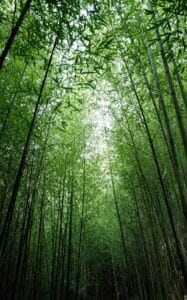Photo credits: Noli Gabilo
“Salamat” – the word used in many Philippine languages to express gratitude – is a cognate of the Arabic “Salaam,” which means peace.
The Salamat Gardens are a celebration of cultural confluence, a Mindanaoan-themed space composed on Cordillera-designed terraces. They were made as an expression of our gratitude to God and His gifts of sky, land and sea. It opens with the “Al Salam” Gate, which complements the earlier Mirador’s Peace Memorial.
Below the gate, Mindanaoan artist Kublai Millan created on each of the terraces his composite artworks expressing our gratitude to God’s gifts of sky (kalangitan), land (kalupaan) and sea (karagatan).
On the first level, the Salamat sa Kalangitan Garden is dominated by a large abstract monument that suggests a bird, surrounded by colourful human figures holding doves.
The center-piece of the gardens, the monument comes in the form of Kublai’s iconic Lullabye motif, his visual representation of peace inspired by the serene reflection of clouds on tranquil water. The Lullabyes are composed in the form of a bird, suggesting at once the Holy Spirit, the Sarimanok (mythical symbol of prosperity in the Meranaw culture of Kublai’s home island of Mindanao), and the Kiling bird of the local Ibaloi culture (who see the bird as harbinger of good harvest). The bird is in red (maroon), gold, and white, colours of the Shield of Oñaz-Loyola.
In Mirador – which is steeped with a history of overcoming destruction and which was developed during the COVID 19 Pandemic – the bird also assumes the significance of a phoenix, rising from the ashes to emerge brighter, stronger, and more abundant.
On the next level is the Salamat sa Kalupaan Garden, which depicts a leaf-designed trellis over a group of human figures holding different kinds of musical instruments. As in the previous level, there is marriage of North and South, with some figures donning the traditional attire and playing the instruments of the Cordillera peoples, while others strongly suggest people from Mindanaoan cultures. This garden’s composition captures the fiesta tradition of thanksgiving of our Filipino communities, especially after a bountiful harvest.
The Salamat sa Karagatan Garden is just below this, and it depicts a group of human figures reeling in a net full of fish from a pond, with a bigger fish also being caught by a fishing rod. Here in landlocked Baguio, this serves as a celebration of the archipelagic country, its thousands of islands, and the bountiful waters which connect us, just as it yields for us these fruits of the sea for our daily sustenance.
Kublai’s artwork in Mirador represents not only our harmony in diversity as a people, but also our communal gratitude to God our creator and source of peace and abundance. Glory be to God for dappled things.
Article photo courtesy of Noli Gabilo







